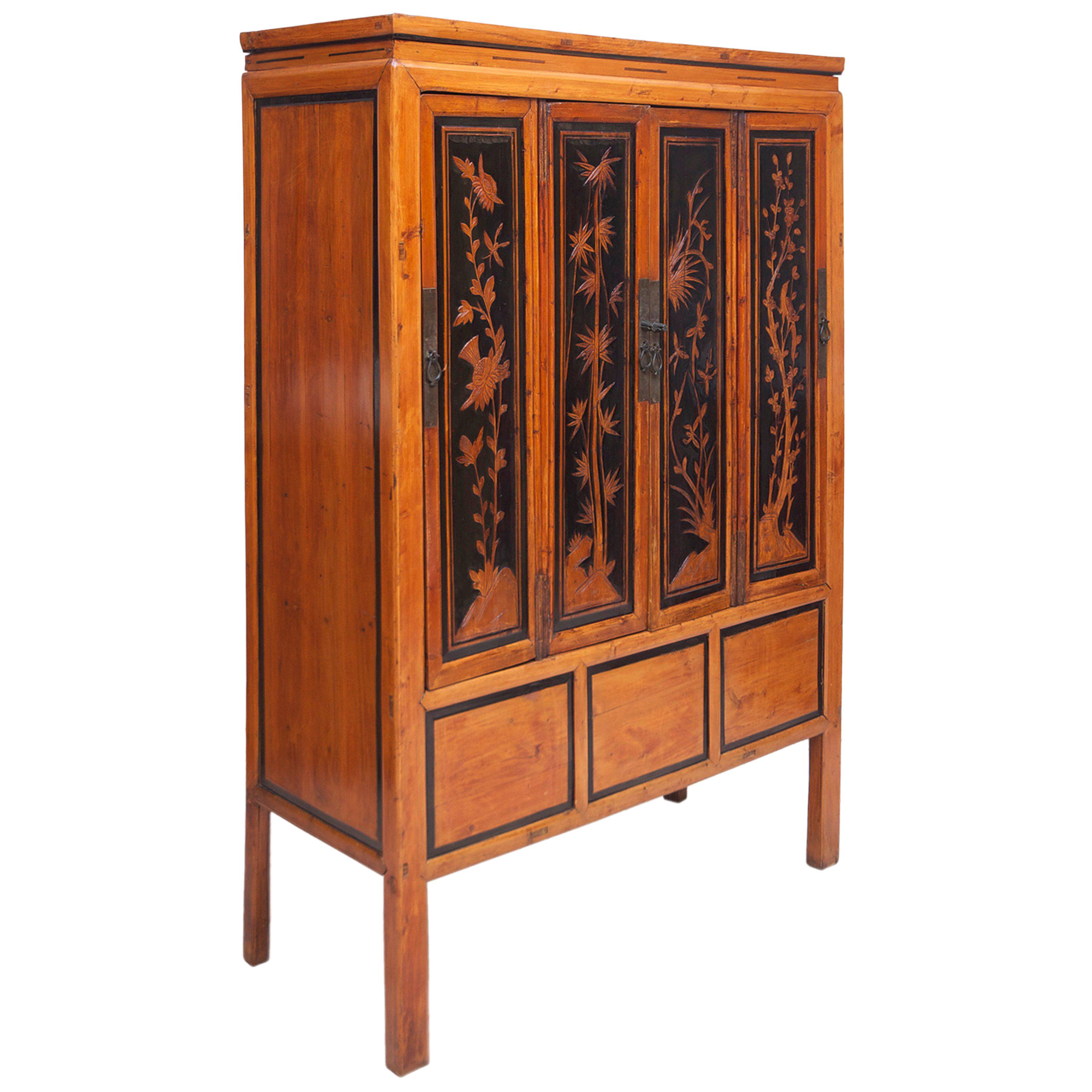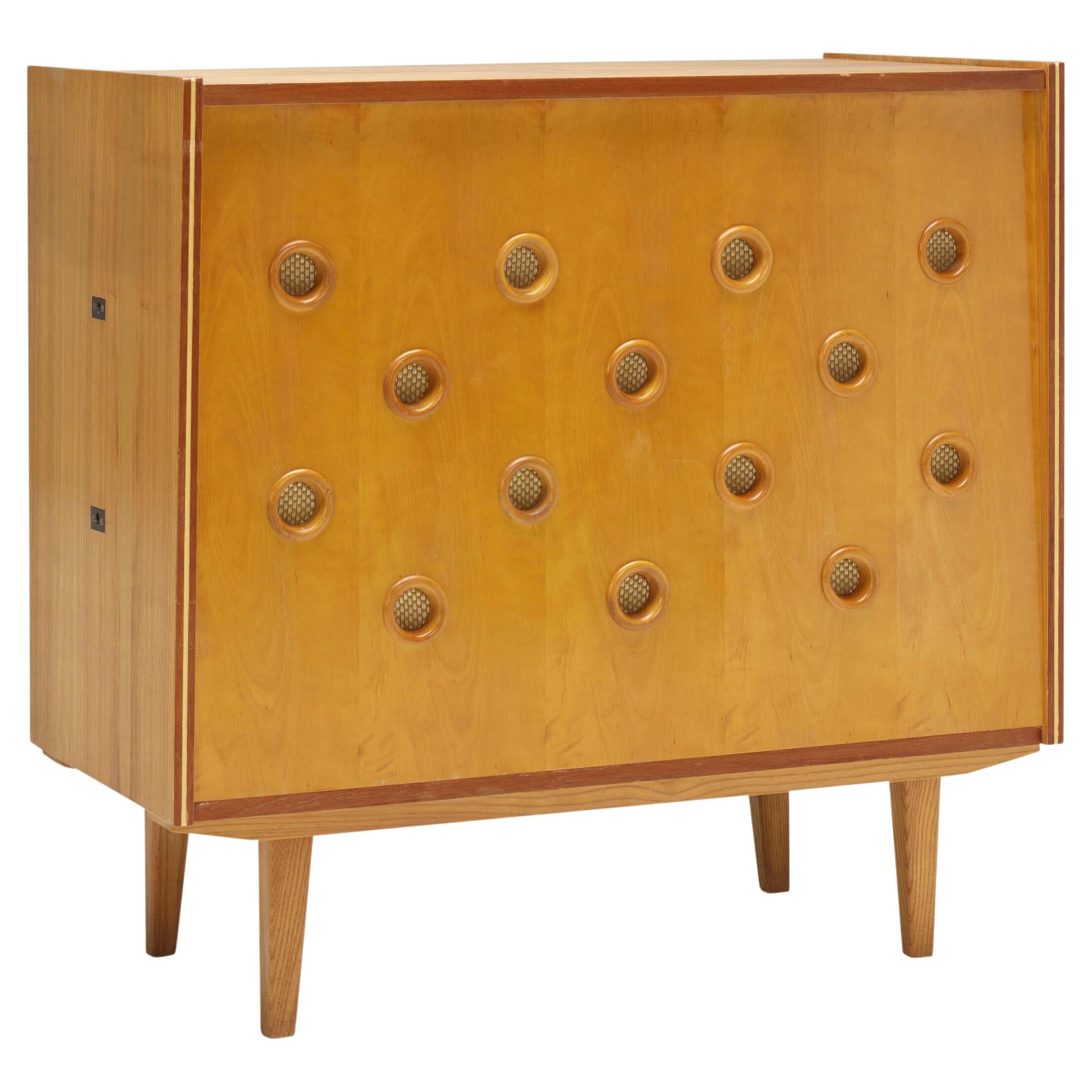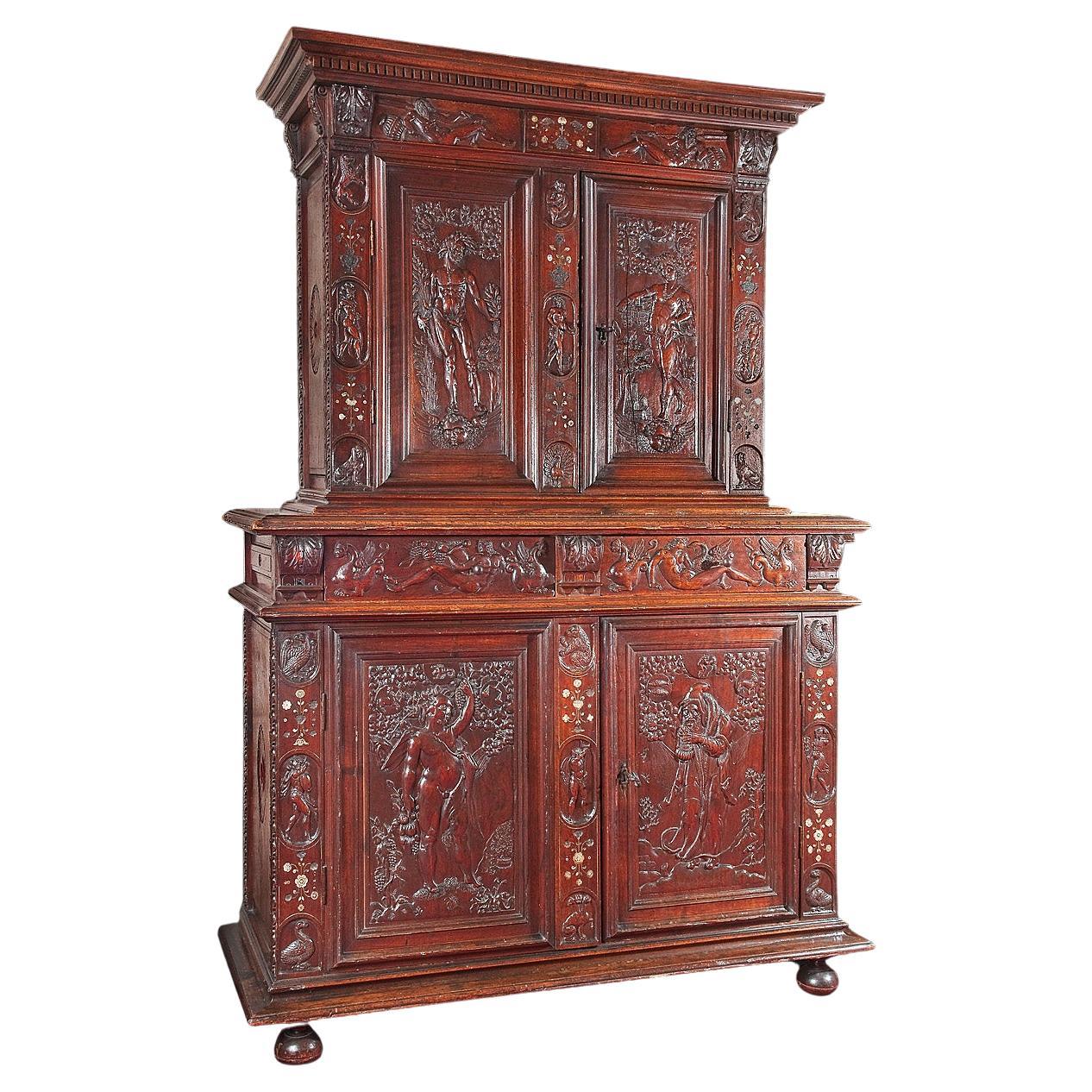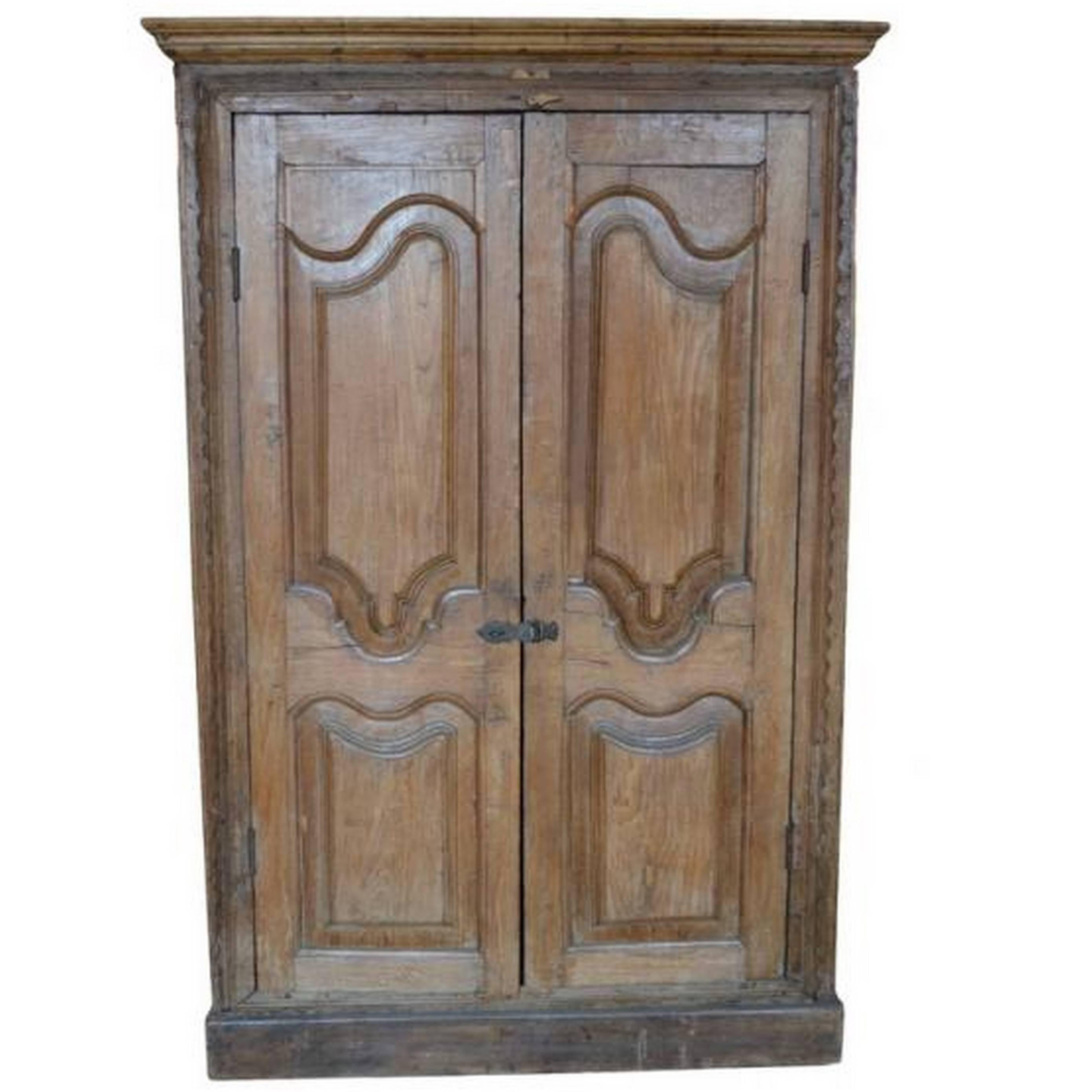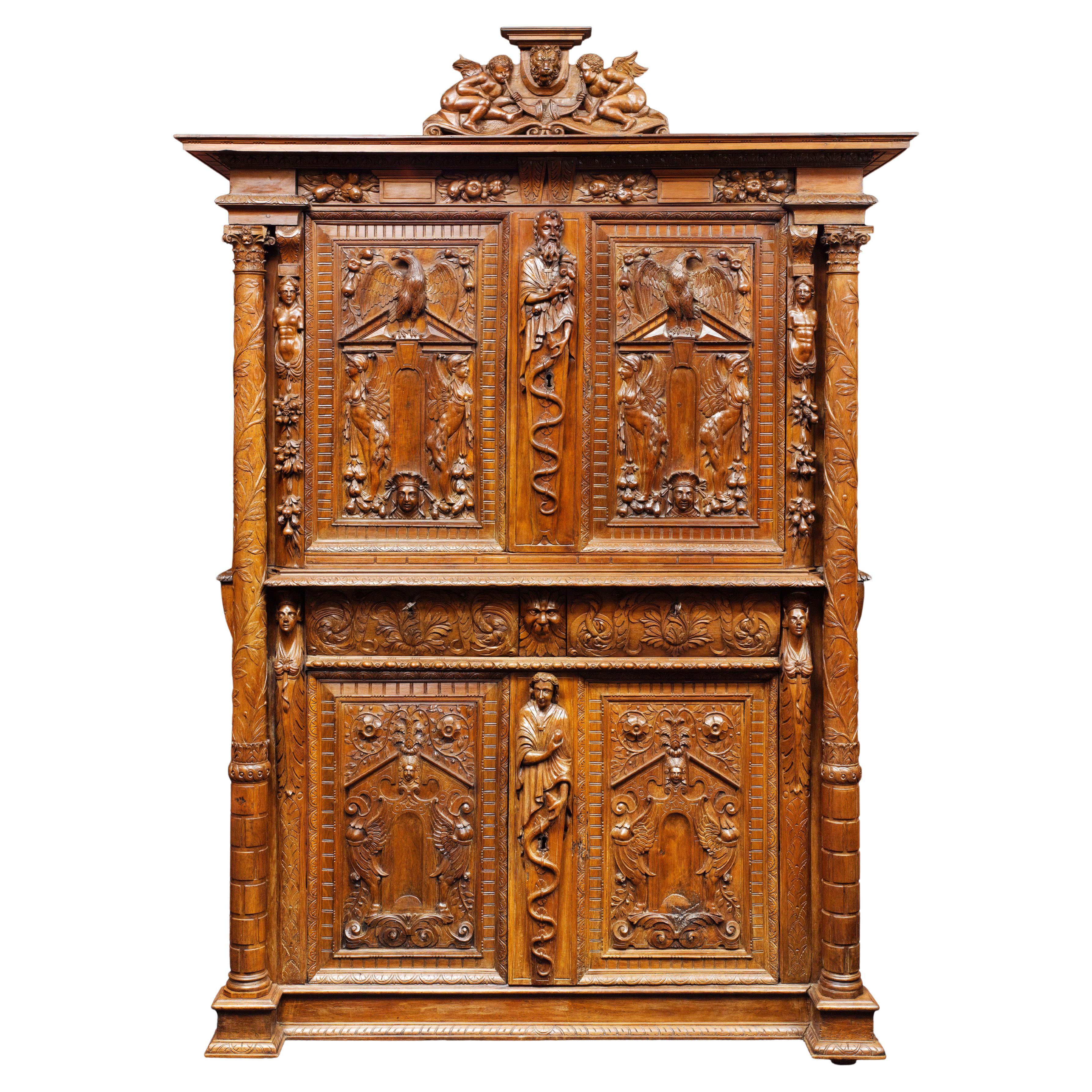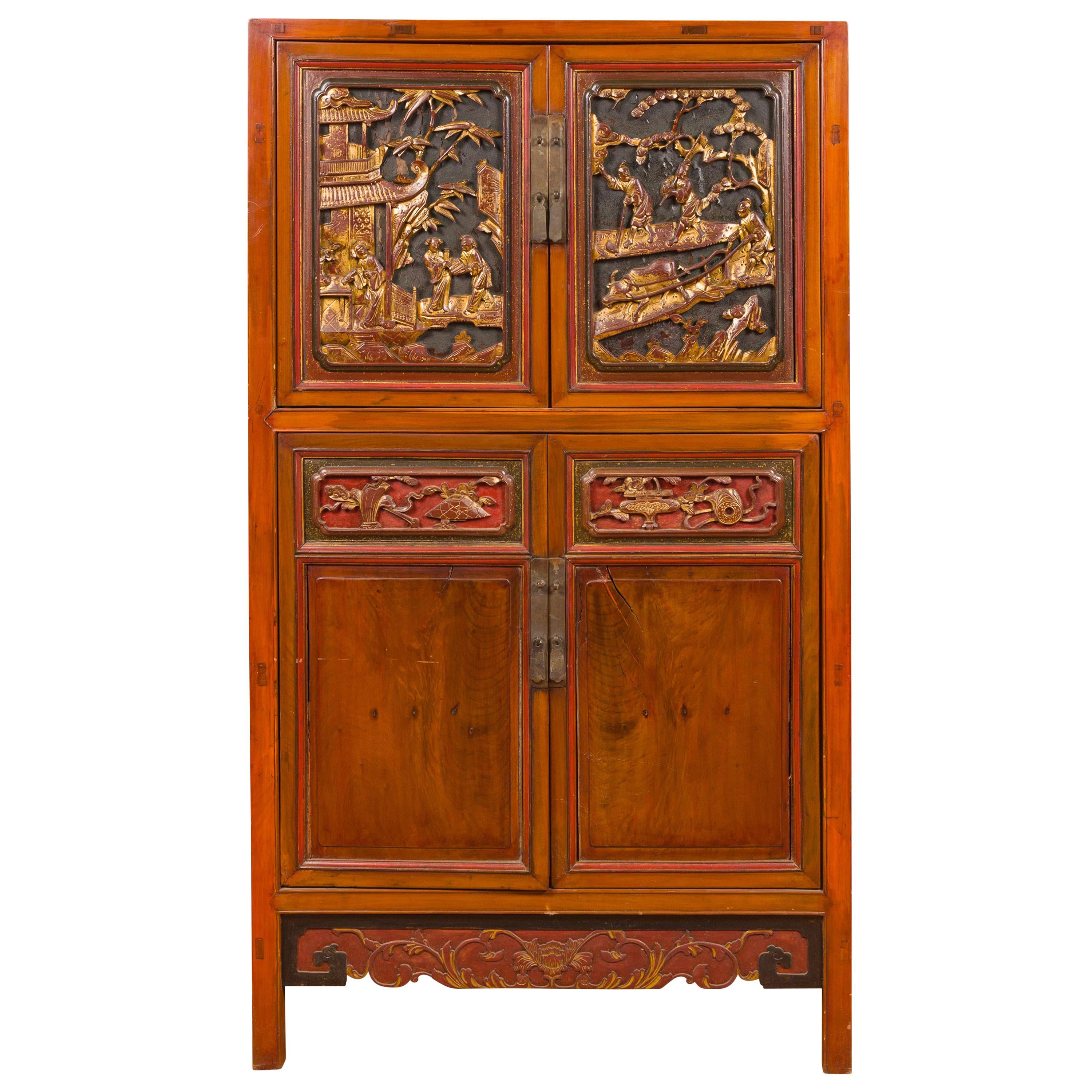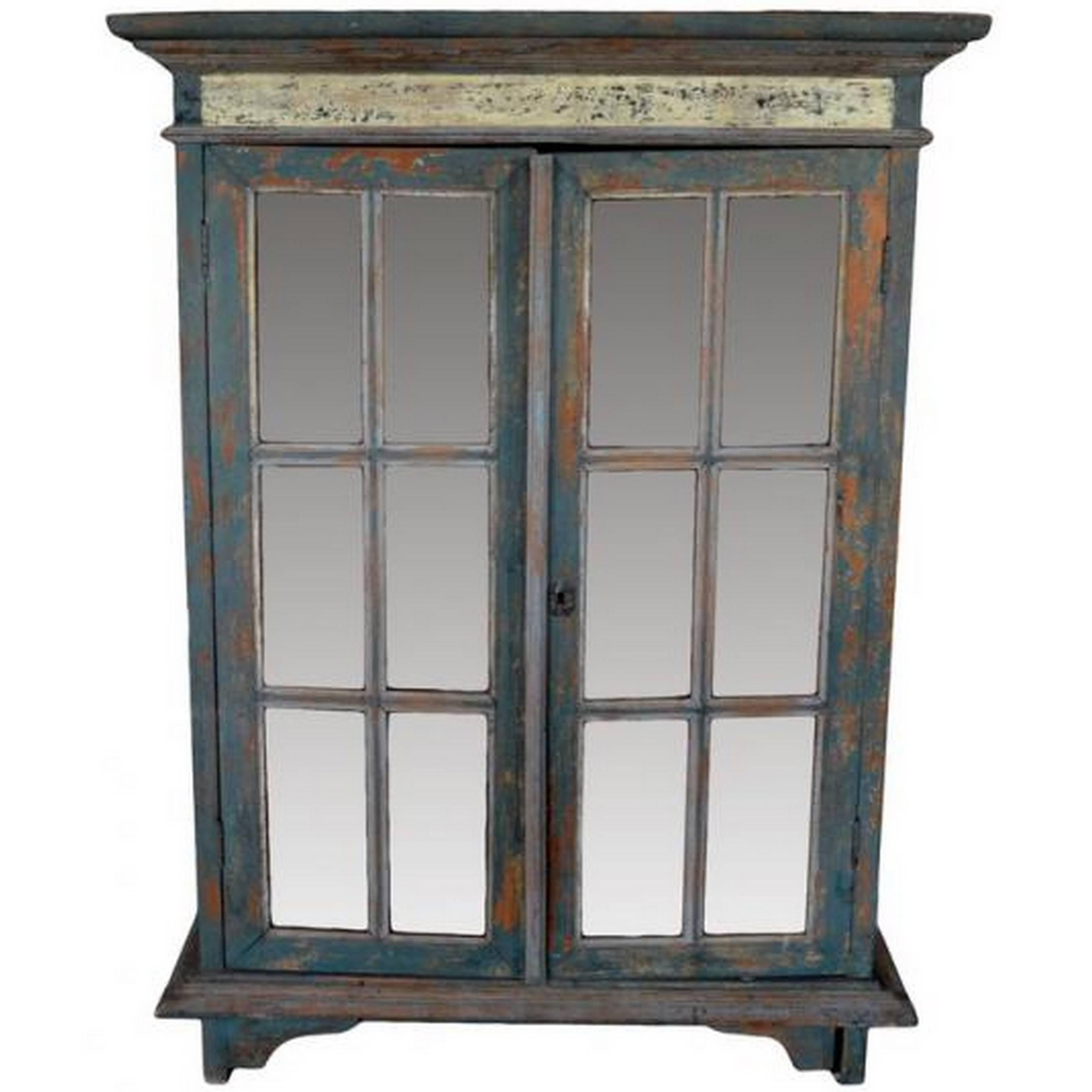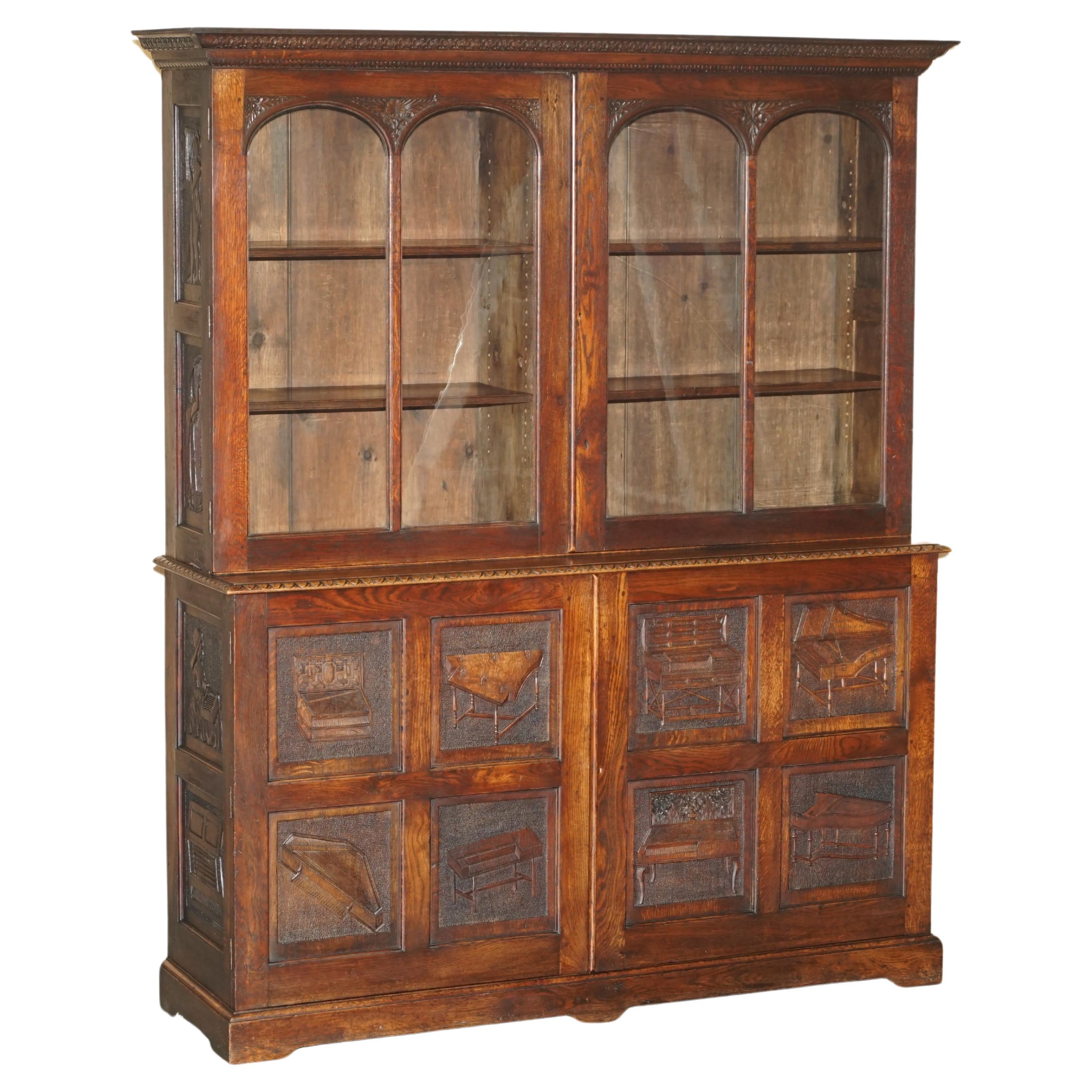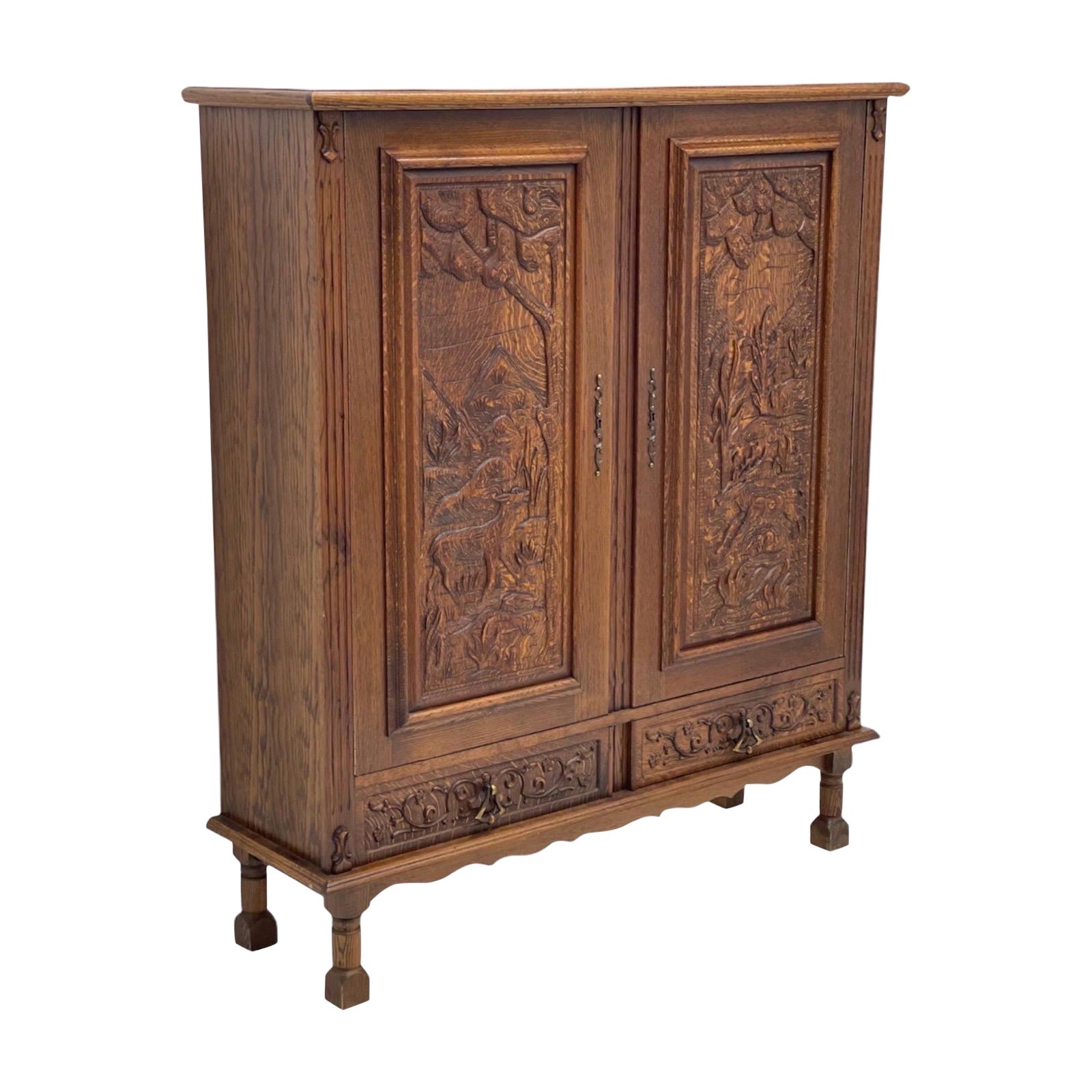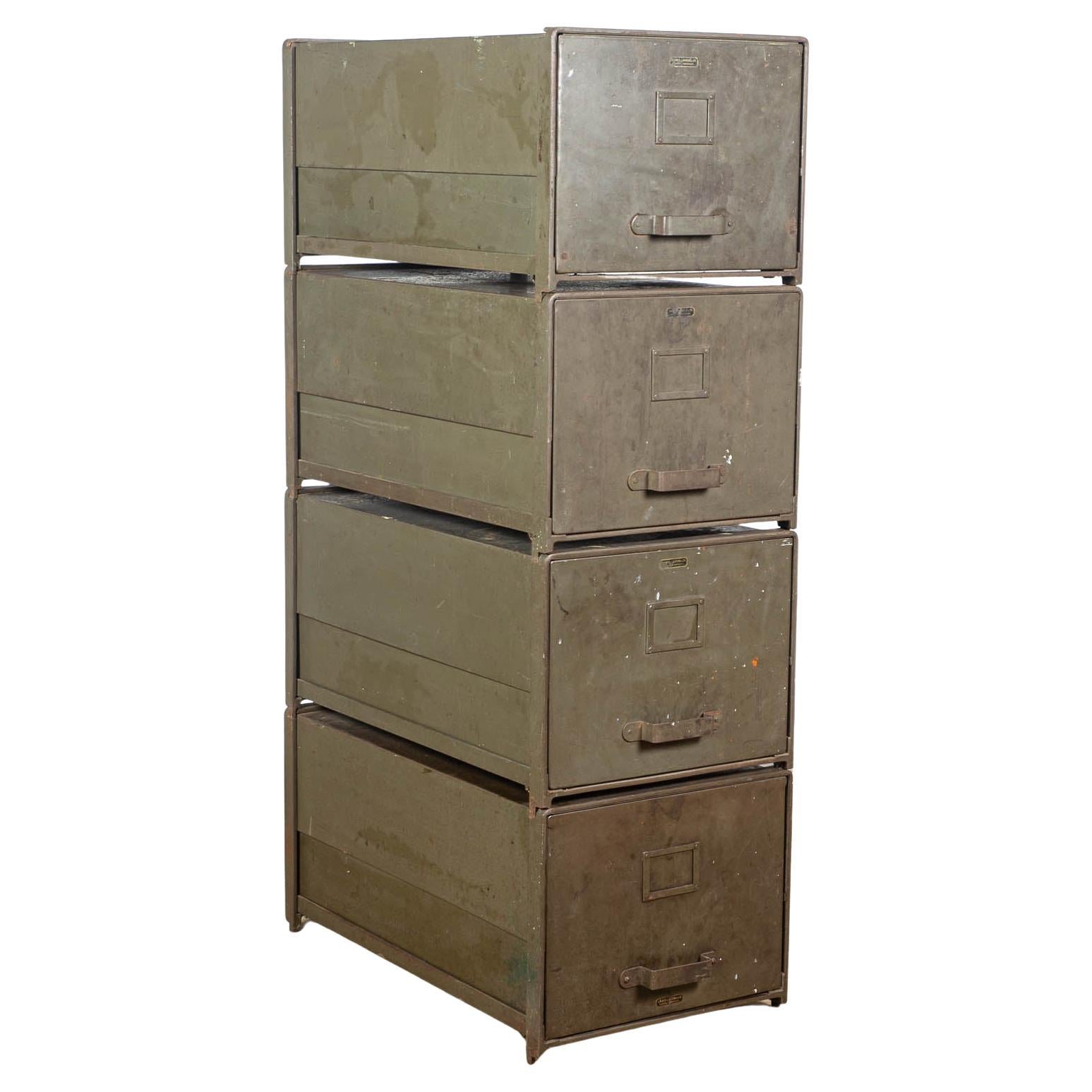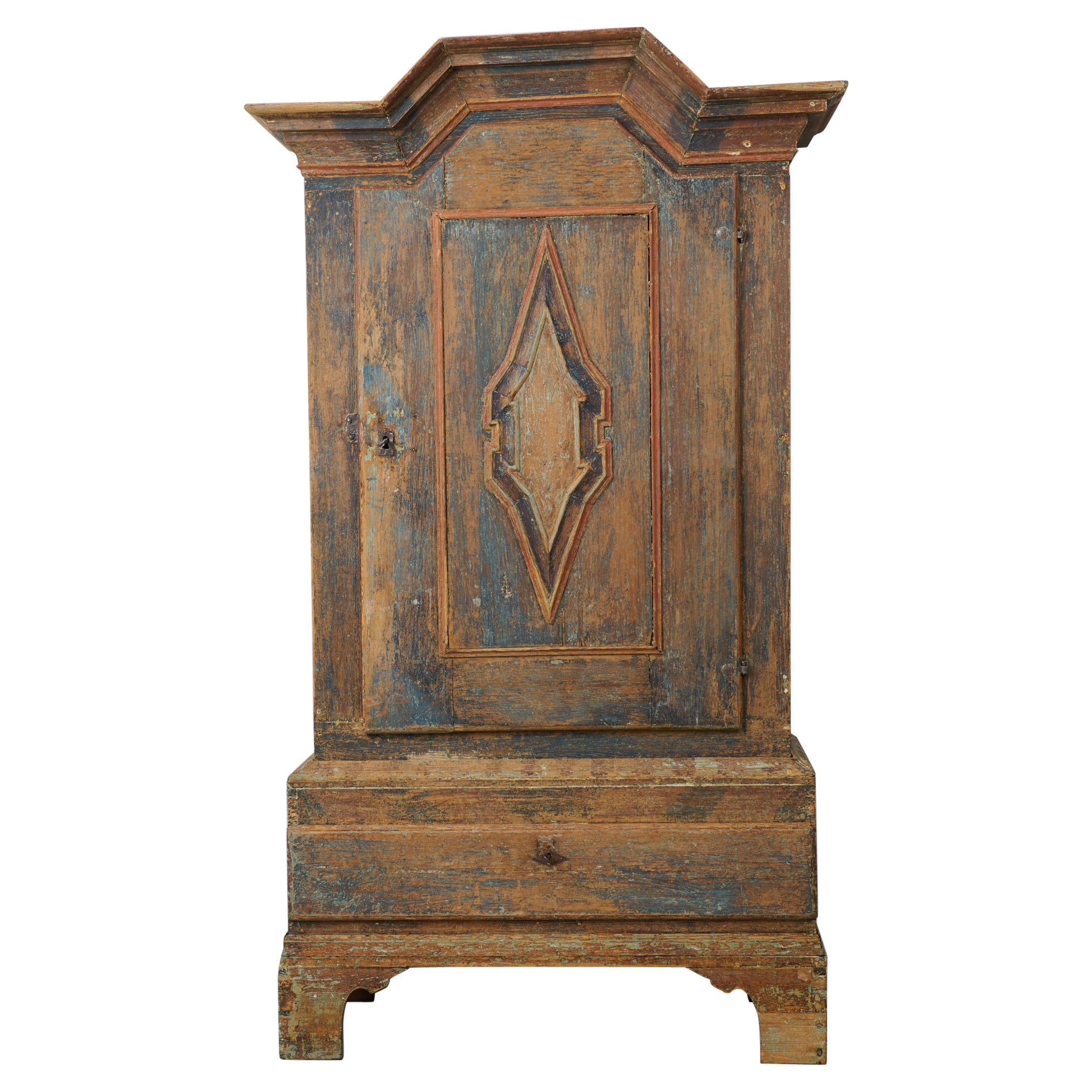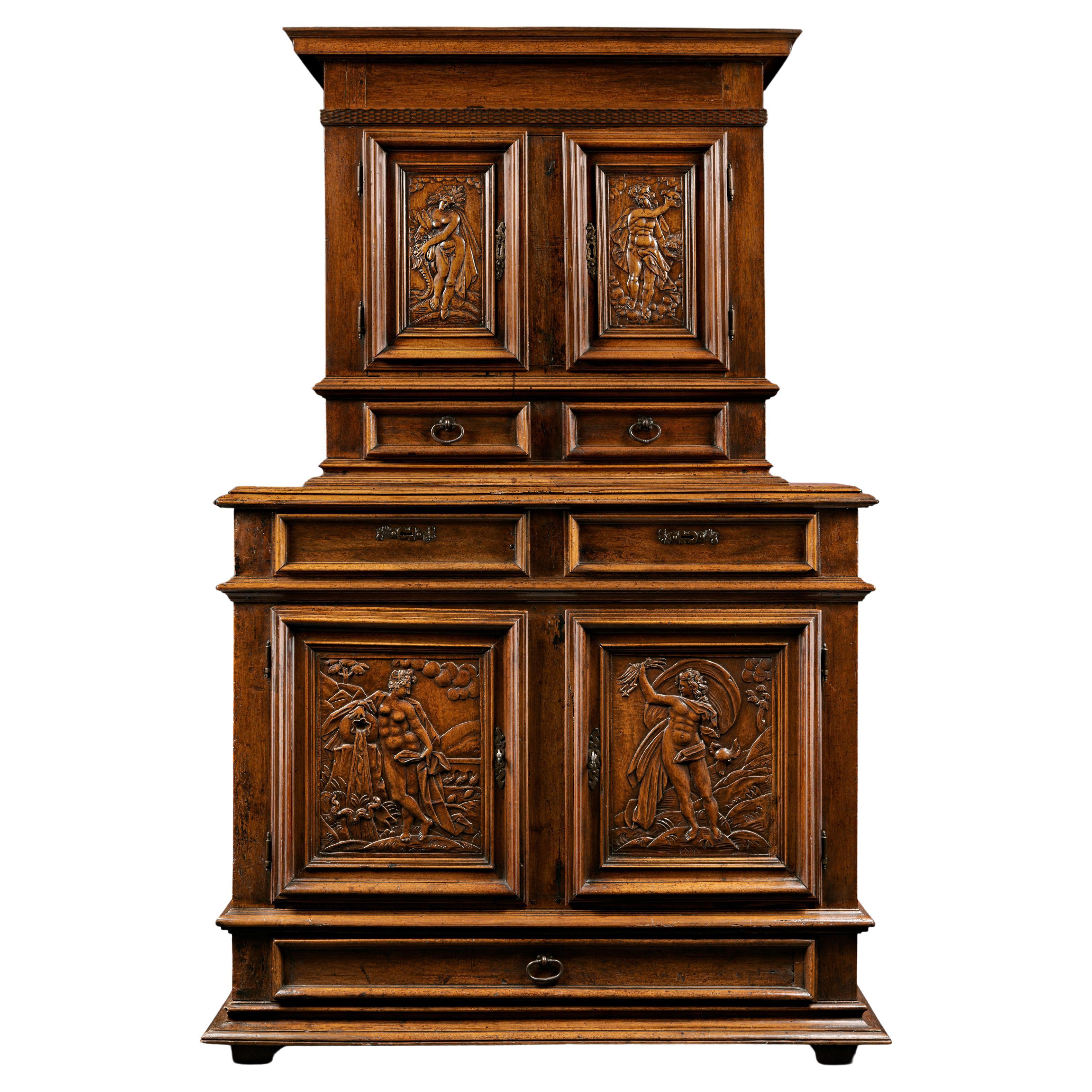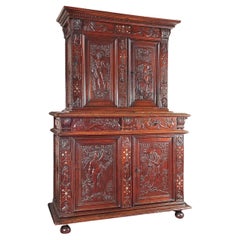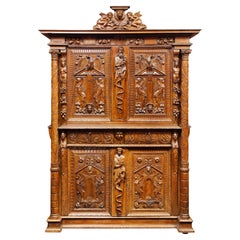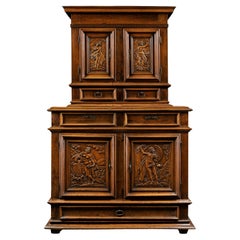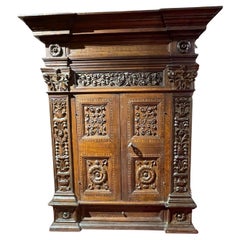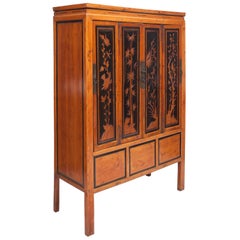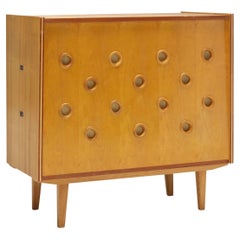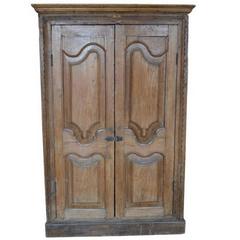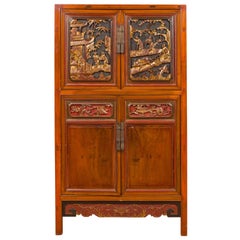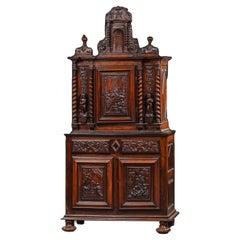
Rare Carved Cabinet with Scenes from the Life of Christ
View Similar Items
Want more images or videos?
Request additional images or videos from the seller
1 of 8
Rare Carved Cabinet with Scenes from the Life of Christ
About the Item
- Dimensions:Height: 85.04 in (216 cm)Width: 40.16 in (102 cm)Depth: 17.33 in (44 cm)
- Materials and Techniques:
- Period:
- Date of Manufacture:17th Century
- Condition:Repaired.
- Seller Location:Saint-Ouen, FR
- Reference Number:1stDibs: LU3115334524432
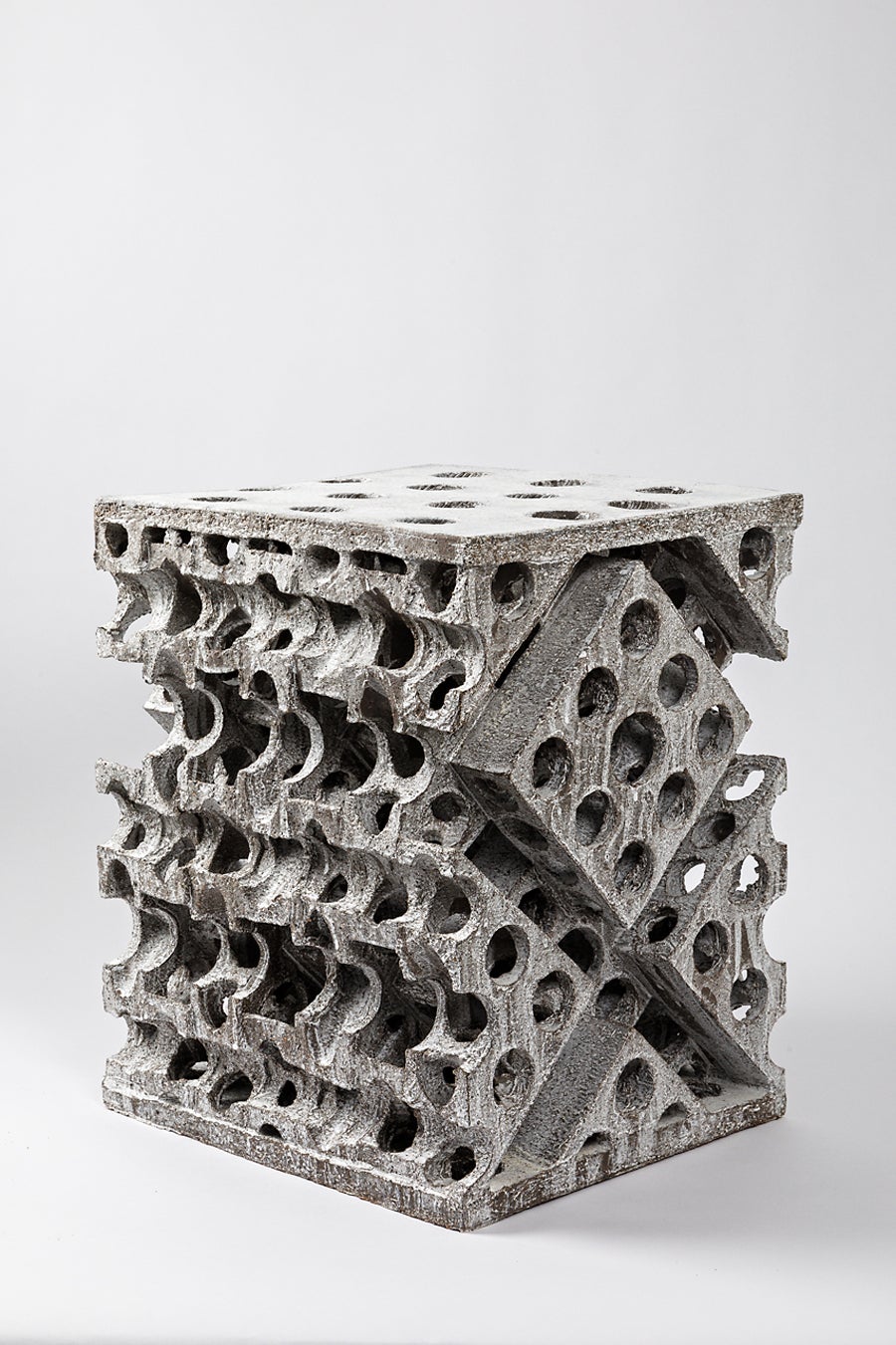
About the Seller
5.0
Vetted Professional Seller
Every seller passes strict standards for authenticity and reliability
Established in 2016
1stDibs seller since 2017
185 sales on 1stDibs
Typical response time: 4 hours
Authenticity Guarantee
In the unlikely event there’s an issue with an item’s authenticity, contact us within 1 year for a full refund. DetailsMoney-Back Guarantee
If your item is not as described, is damaged in transit, or does not arrive, contact us within 7 days for a full refund. Details24-Hour Cancellation
You have a 24-hour grace period in which to reconsider your purchase, with no questions asked.Vetted Professional Sellers
Our world-class sellers must adhere to strict standards for service and quality, maintaining the integrity of our listings.Price-Match Guarantee
If you find that a seller listed the same item for a lower price elsewhere, we’ll match it.Trusted Global Delivery
Our best-in-class carrier network provides specialized shipping options worldwide, including custom delivery.More From This Seller
View AllRare Renaissance Cabinet Richly Carved
Located in Saint-Ouen, FR
This rare Renaissance cabinet is richly decorated on the doors and drawers with carvings depicting the four seasons, and on the uprights and the entablature, alternating flower bouquets inlaid with mother of pearl. This is a beautifully conceived piece of furniture, representing a crowned portico with its entablature and cornice.
The upper body
Articulated separately in a ternary rhythm, as with the lower body, the upper part opens with two carved doors. The doors are framed by both the lateral uprights and the casing. There are cartouches carved into the casing in which mythological figures are depicted with flower bouquets.
On the doors:
On the right: Spring, a female figure crowned with a wreath of leaves, holding a basket full of flowers. She is wearing necklaces and bracelets on each arm, with drapery discretely wrapped around her body and is standing on a winged putti’s head. On each side are depicted a tree and a village with a steepled church. Above her head floats the three signs of the zodiac corresponding to the season: Aries, Taurus and Gemini.
On the left: Summer, a bearded man crowned with ears of corn and bearing armfuls of corn. He is standing on a similar winged putti, flanked by a tree and an ear of corn. The following three signs of the zodiac appear: Cancer, Leo and Virgo.
On the uprights and the central casing a number of smaller figures seem to represent virtues and vices that newly wedded couples should aspire to and avoid.
On each side, at the bottom of the uprights, there is a dog representing fidelity. Above, a lion embodies power, wisdom, and justice.
In between, on the left upright, there is a figure of noncombatant Athena wearing a helmet and holding a spear, an arrow pointing down and in her left hand, a shield, symbol of protective power. On the right upright, the goddess Venus controls the arrow of Cupid.
The iconography here acts as a clear reminder of the required virtues that both parts of a young couple need to fulfill: fidelity, power, wisdom and justice. For him, the goddess Athena focuses on the power. Whereas for her, it is Venus who shows how to control Cupid’s arrow.
On the central casing at the bottom, by way of contrast, there is a peacock, a symbol of pride and at the top, a monkey representing lust and mischief. In between, a woman holding a chain and a cup full of precious stones while on the floor sits a half empty opened casket. This can be interpreted as a symbol of extravagance.
Above, the entablature, decorated with male figures resting on leaking urns, may symbolize the passing of time. They are flanked by two consoles decorated with acanthus leaves and separated by flower bouquets (inlaid with mother of pearl). Finally on top, a cornice acts as a crown for the piece of furniture.
The lower body
The moulded base stands on four round, flattened feet.
Represented on the doors:
On the left: Autumn, a stocky, naked man crowned with vine leaves, holding fruits in his right hand and with his left, picking a bunch of grapes from a climbing vine. Standing on a mound, he is surrounded by a vine and a hill, at the foot of which a man presses the grapes in a big vat after the harvest. Above the climbing vine appear the signs of Libra, Scorpio and Sagittarius.
On the right: Winter, an elderly man wearing a fur cloak...
Category
Antique 16th Century French Renaissance Cabinets
Materials
Walnut
A Rare Renaissance Walnut Cabinet With Its Freestanding Carved Columns
Located in Saint-Ouen, FR
A RARE RENAISSANCE WALNUT CABINET WITH ITS FREESTANDING CARVED COLUMNS
ORIGIN : FRANCE, BURGUNDY
PERIOD : 16th CENTURY
Height : 218 cm
Length : 152 cm
Depth : 67.5 cm
Walnut
Thi...
Category
Antique 16th Century European Renaissance Cabinets
Materials
Wood, Walnut
Rare Cabinet depicting the Four Elements
Located in Saint-Ouen, FR
RARE CABINET DEPICTING THE FOUR ELEMENTS
ORIGIN : FRANCE
PERIOD : CIRCA 1600
Height: 178 cm
Width: 112 cm
Depth: 50 cm
Former Perpitch Collection
Forme...
Category
Antique 16th Century European Renaissance Cabinets
Materials
Wood, Walnut
Rare Renaissance Florentine Cabinet with Certosina Decoration
Located in Saint-Ouen, FR
RARE RENAISSANCE FLORENTINE WALNUT CABINET WITH CERTOSINA DECORATION
ORIGIN: FLORENCE, ITALY
PERIOD: END OF 15th CENTURY – BEGINNING OF 16th CENTURY
Height: 129 cm
Length: 107 cm...
Category
Antique 16th Century Cabinets
Materials
Walnut
Important Renaissance Cabinet from Lyon 'France' with a Decor of Perspectives
Located in Saint-Ouen, FR
As soon as 1540 France's second Renaissance is in the making, intimately linked to the rediscovery of the Antique world. The development of the printing and engraving industry allows the spread of artworks and models in many cities and countries. The Italian influence can be perceived in every artistic field. While the French king entrust the most talented Italian artists with major projects such as Il Rosso or Primaticcio in Fontainebleau, French artists also travel to Italy to form themselves to this new style. In Italy they get acquainted with the work of Leo Battista Alberti the first to theorize perspective (De Pictura, 1435-36) and architecture (De re oedificatoria, 1541). Those two publications would have a revolutionary impact on arts.
Furniture is marked by the work of the most famous Italian architects of the time as well as French architects. Indeed Philibert de l'Orme competes with Alberti and by the end of his life publishes several treaties including one devoted to a theory of architecture (1567). Unfortunately he would not live to complete the second volume. In this treaty he expresses his interest for mathematical norms applied to architecture, copied from the Antique. His journeys in Italy allowed him to accumulate the most sophisticated references. Jean Bullant, another architect of great talent also theorizes his practice. He establishes rules characterizing Greco-Roman art staying faithful to Vitruvius.
Following this new inspiration the structure of furniture evolves. From then on appear columns, capitals, cornices, friezes and architraves. The ornamentation uses this inspiration as well with egg-and-dart, palm leaf and rose adorning the most beautiful pieces.
In Lyon, crossroad where meet merchants from everywhere those new experiments are welcomed. Lyon florishing printing industry allows the spreading of models and treaties essential to the artist's work. Thus the first publication of Vitruvius' De Architectura in France would be printed in Lyon in 1532.
Artists from Lyon rediscover and familiarize themselves with the Antique knowledge very early. They adopt those new ideas and use them in their own creations. Lyon cabinet-makers re interpret Antique architecture and Italian Renaissance palaces to give their pieces a pure and harmonious architectural structure. Grooved pilasters are particularly favored. They are topped by capitals of diverse orders always respecting the sequencing with simpler ones for the lower levels and the richest ones on the higher levels. As for the ornamentation, one of the great distinctiveness of Lyon workshops remains the architectural perspective illusions, drawing inspiration from Tuscany.
True masterpiece of the Second French Renaissance this important cabinet illustrates Lyon workshops' taste for fine Italian architecture inspired by Antiquity. An architectural perspective of great quality is treated in symmetry on each panel.
This two-bodied cabinet without recess stands on four rectangular feet. The base comprises a molding, a palm leaf frieze and is bordered by a braid.
The lower body is divided by three grooved pilasters with Tuscan capitals framing two door-leaves. The two panels are encircled by a moudled frame with palm leaves. They are finely carved with a decor of fantasized architecture depicting an Italian Renaissance palace erected symmetrically on each side of a grooved pilaster. On the ground floor a door opens through a stilted arch while the stories are opened with mullioned windows, dormers and occuli. Two large pegged-boss cladded pillars support the entablature enriched by a palm leaf frieze upon which stands an arch whose coffered intrados is centred by a rose. Behind this arch a pyramid appears, standing in front of a second facade with a window topped by a broken curvilinear pediment under a cul-de-four with a shell.
The checker flooring gives depth to the low-reliefs creating vanishing points structuring the panels and guiding the eye of the observer.
A thin laurel braid highlights the belt of the cabinet where are located two drawers. Their facades are adorned by palm leaves in hoops.
The upper body is encircled with palm leaves. The same ternary division as in the lower body appears. However, the pilasters are topped by Ionic capitals with volutes and egg-and-dart. The door-leaves are framed with flowers. On the panels the artist has designed another architectural decor. On the foreground open two arches on top of grooved pilasters with rectangular capitals adorned with palm leaves. The arches are enriched with braids and the coffered intrados bears a decor of roses. The spandrels also bear a flower decor. In the background another arcature hosts a fluted grooved column topped with double basket acanthus capital, characteristic of Corinthian order. The triangular pediment is interrupted by a choux bourguignon.
A large cornice crowns the cabinet. It stands on pilasters and forms an entablature comprising a palm leaf frieze and an egg-and-dart, triglyph and palm leaf cornice.
The cabinet's sides have also been carefully considered. The lower body's panels are enriched with an arch rising above a broken pediment portico hosting a twisted column. Flowers garnish the spandrels. An architectural facade completes the decor. The upper body's panels present two arches supported by a facade opened with dormers and mullioned windows as well as cartouches (one bears the inscription 1580 dating the cabinet) suggesting the interior of an Italian Renaissance palace, confirmed by the chandeliers. The flooring leads our gaze to a second arch with a broken curvilinear pediment where stands a flower vase. This arch opens onto a perspective of another facade along a road.
Inside the cabinet, on the lower body door-leaves appear two designs. On the right door is depicted a Crucifixion. Saint Mary and Saint John flank the Christ on the cross. In the bottom part is inscribed « Dure uiator abis nihil haec spectacula curas / Pendenti cum sis unica cura Deo. / Tota suo moriente dolet natura Magistro. / Nil qui solus eras caussa dolenda doles. ». The signature [Christoff Swartz Monachiensis pinx[it] / Ioa[nnes] Sadeler sculp[it]] tells us it was made by Johan Sadeler I (1550-1600) after Christoph Schwartz (1548-1592). This engraving belongs to an ensemble depicting the Passion of Christ Johan Sadeler executed in 1589 after an altar piece painted by Christoph Schwartz for the private chapel of Renée of Loraine, wife of Duke William V of Bavaria. This altar piece made of nine copper panels has been destroyed during the 19th century. The Crucifixion panel once in the centre of the altar piece is the only one that survived and is today kept in Munich's Alte Pinakothek.
On the left door appears Saint Francis receiving the stigmata. The inscription says : « Signastidomine Servum Tuum. Franciscum. Signis Redemptionis Nostrae ».
This Renaissance cabinet with an architectural decor appearing as much in the structure faithful to Antique rules...
Category
Antique 16th Century European Renaissance Cabinets
Materials
Walnut
Rare Renaissance Cabinet with Feather quill and Fenestration Decoration
Located in Saint-Ouen, FR
RARE RENAISSANCE CABINET WITH FEATHER QUILL AND FENESTRATION DECORATION
ORIGIN: FRANCE
PERIOD: EARLY 16th CENTURY
DIMENSIONS :
Height : 178 cm
Length : 145 cm
Depth : 58 cm
Walnu...
Category
Antique 16th Century Cabinets
Materials
Walnut
You May Also Like
Antique Chinese Cabinet in Elm with Carved Scenes of Four Seasons & Ebonizing
Located in Miami, FL
A lovely Chinese cabinet in elm with four doors whose panels show a carved scene of vegetation representing each of the four seasons in relief. ...
Category
Early 20th Century Chinese Qing Furniture
Materials
Elm
$3,375 Sale Price
50% Off
Rare Cabinet from the U-450 series by Jiří Jiroutek
By Jiri Jiroutek
Located in Dallas, TX
A mid-century cabinet No. U-450 designed by Jiří Jiroutek made of ash, birch, fabric, and steel. The cabinet features a flip-top concealing storage with venting along the underside.
...
Category
Mid-20th Century Czech Mid-Century Modern Cabinets
Materials
Steel
Antique Indian Tall Rustic Cabinet with Carved Doors from the 19th Century
Located in Yonkers, NY
A 19th century tall rustic cabinet with carved doors made in India. This tall cabinet features two doors surmounted by a cornice while the piece itself sits on a large plinth. The d...
Category
Antique 19th Century Indian Furniture
Materials
Wood
Ming Dynasty Style Cabinet with Gilt Carved Court and Work Scenes
Located in Yonkers, NY
An antique Chinese Ming dynasty style cabinet from the 19th century, with two pairs of double doors, two drawers, carved giltwood motifs and red accents. Born in China during the 19th century, this wooden cabinet captures our attention with its contrast of colors and delicately carved motifs. Presenting a linear silhouette, the cabinet is adorned with court scenes on the left panel and work scenes on the right. This gilt décor stands out beautifully on the dark ground, while other carved panels are highlighted by a red ground in the lower section. Two pairs of double doors total open to reveal a convenient storage space, the lower ones hiding inner drawers. Carved on the apron, the cabinet is resting on four straight legs. With its clean lines and skillfully carved decor, this Ming style cabinet...
Category
Antique 19th Century Chinese Ming Cabinets
Materials
Wood
Rustic Hand Carved Goan Indian Cabinet with Glass Doors from the 19th Century
Located in Yonkers, NY
A rustic cabinet with glass doors hand carved in the Goa state of India. The rectangular shape of this cabinet is emphasized by the cornices ...
Category
Antique 19th Century Indian Furniture
Materials
Wood
Vintage Cabinet from Germany with Hand Carved Motifs, circa 1930s
Located in Seattle, WA
Vintage cabinet from Germany with hand carved motifs, circa 1930s
Dimensions. 53 W ; 16 D ; 60 1/2 H.
Category
Vintage 1930s Mid-Century Modern Cabinets
Materials
Wood
$3,595 Sale Price
10% Off
Recently Viewed
View AllMore Ways To Browse
Rustic White Cabinet
18th Glass Display Cabinet
Beechwood Cabinet
Belgian Rococo
Brass Chinoiserie Hardware
Industrial Steel Drawer
45 Wide Cabinet
Bleached Kitchen Cabinet
Century Furniture Pagoda Cabinet
Danish Record
Italian Ivory Cabinet
Pastform Furniture
Used Luxury Kitchen Cabinets
Vintage File Drawers
Wood Wrought Iron Interior Furniture
Antique Gold Shelves
Boulle Style Cabinet
Brass Wine Cabinet
